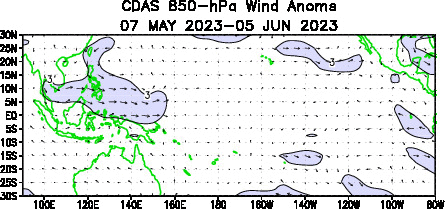Planktic foraminifera are tiny, unicellular zooplankton that are widely found in the open ocean and can tolerate a large range of environmental conditions. During their short (2-4 weeks) lifespan, they build shells (or tests) made of calcium carbonate. The tests fall to the seafloor and continually become covered by sediments over time. We can access these foraminiferal tests using sediment-cores and analyze their geochemistry to unravel all sorts of things about past ocean conditions.
Typically, ~10-100 shells of a particular species are taken from a sediment sample, and collectively, analyzed for their isotopic or trace metal composition. This procedure is repeated with each subsequent sample as you move down in the core. Each of these measurements provides an estimate of the "mean climatic state" during the time represented by the sediment sample. In contrast, individual foraminiferal analyses (IFA), i.e. the geochemistry of each shell within a sample, can provide information about month-to-month fluctuations in ocean conditions during that time interval. The statistics of IFA have been used to compare and contrast climate variability between various paleoclimate time periods.
There are many questions regarding the uncertainty and appropriate interpretation of IFA statistics. We addressed some of these issues in this publication. We provided a code that forward-models modern observations of ocean conditions and approximates, with uncertainty, the minimum number of foraminiferal tests required for a skilled reconstruction. In other words: "how many shells are needed for a good climate signal?"
Armed with this algorithm, we tested various cases in the Pacific Ocean to obtain better estimates of past changes in the El Niño/Southern Oscillation, a powerful mode of present-day climate variability. We found that the interpretation of IFA statistics is tightly linked to the study location's climate signal. Namely, we found that the ratio of seasonality1 to interannual variability2 at a site controlled the IFA signal for a given species occurring throughout the year. We then demonstrated that this technique is far more sensitive to changes in El Niño amplitude rather than its frequency.
In the central equatorial Pacific, where the seasonal cycle is minimal and year-to-year changes are strong, we showed that IFA is skillful at reconstructing El Niño. In contrast, the eastern equatorial Pacific surface-ocean is a region where El Niño anomalies are superimposed on a large annual cycle. Here, IFA is better suited to estimate past seasonality and attempting to reconstruct El Niño is problematic. Such a pursuit becomes more complicated due to changes in the past synchrony of El Niño and seasonality.
Our results also suggest that different species of foraminifera, found at different depths in the water column, or with a particular seasonal preference for calcification, might have more skill at recording past changes in El Niño. However, care should be taken in these interpretations too because these preferences (which are biological in nature) might have changed in the past as well (with or without changes in El Niño).
You can use our MATLABTM code, called INFAUNAL, to generate your own probability distributions of the sensitivity of IFA towards seasonality or interannual variability for a given sedimentation rate, number of foraminifera, and climate signal at a core location in the Pacific. Do let me know if you have any difficulties running the code!
1 - The difference in environmental conditions between summer and winter, average over multiple years
2 Changes from year-to-year (could be winter-to-winter or summer-to-summer etc.) within the time period represented by the sediment sample





